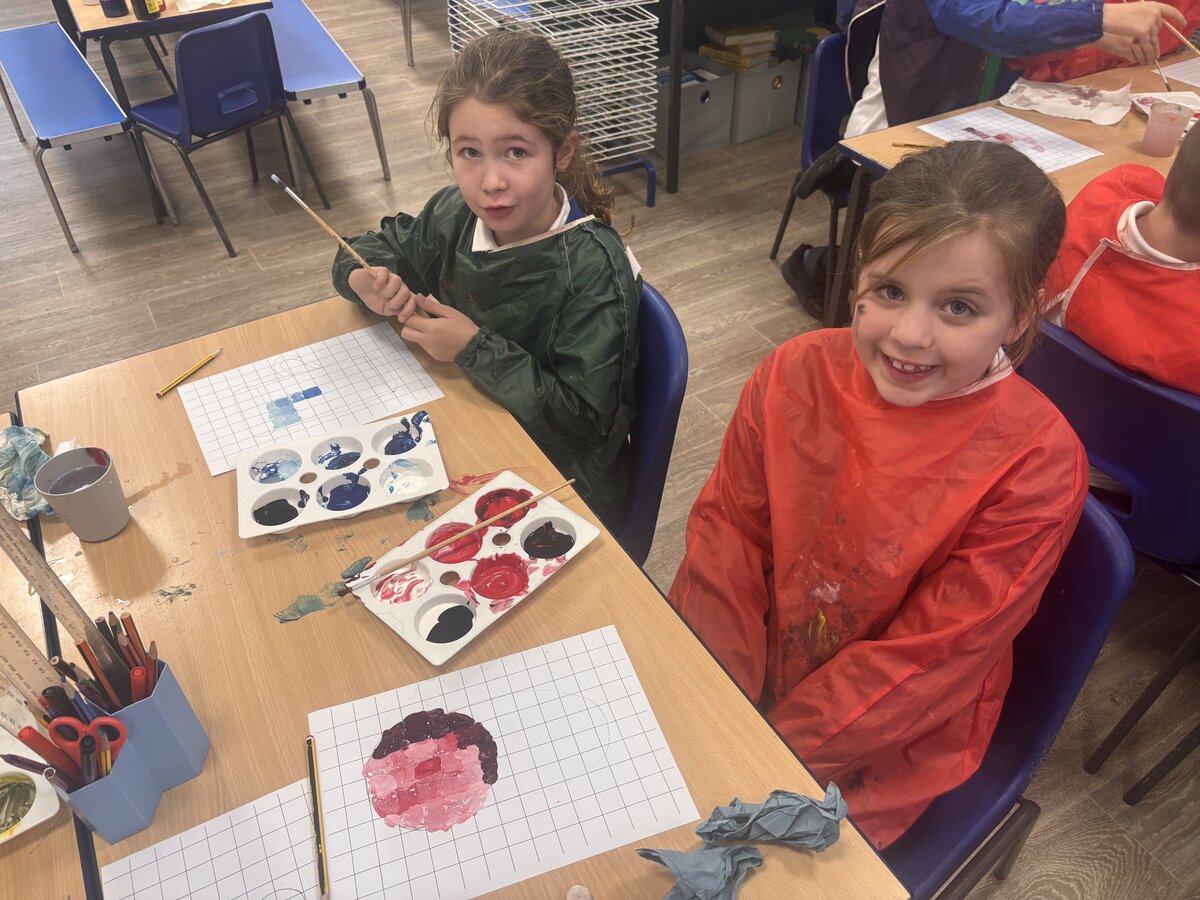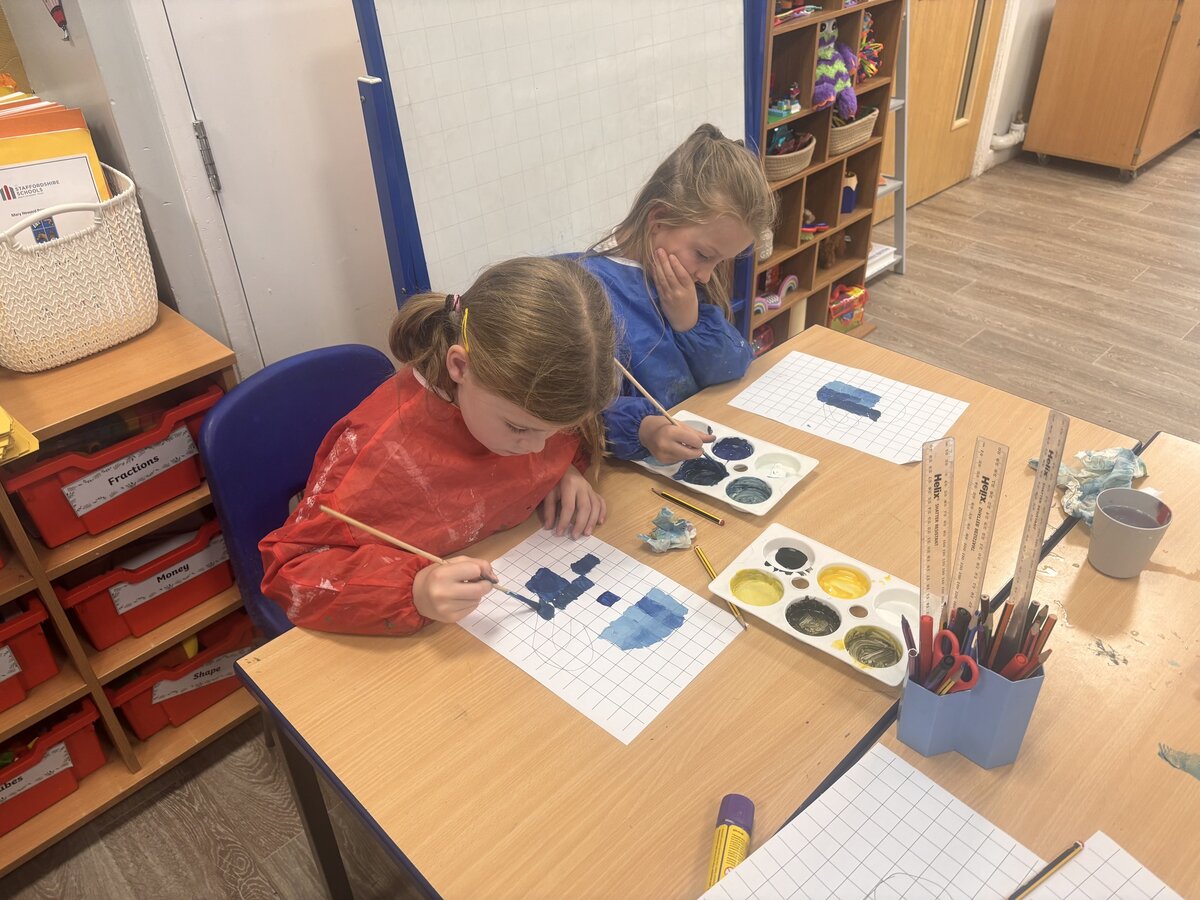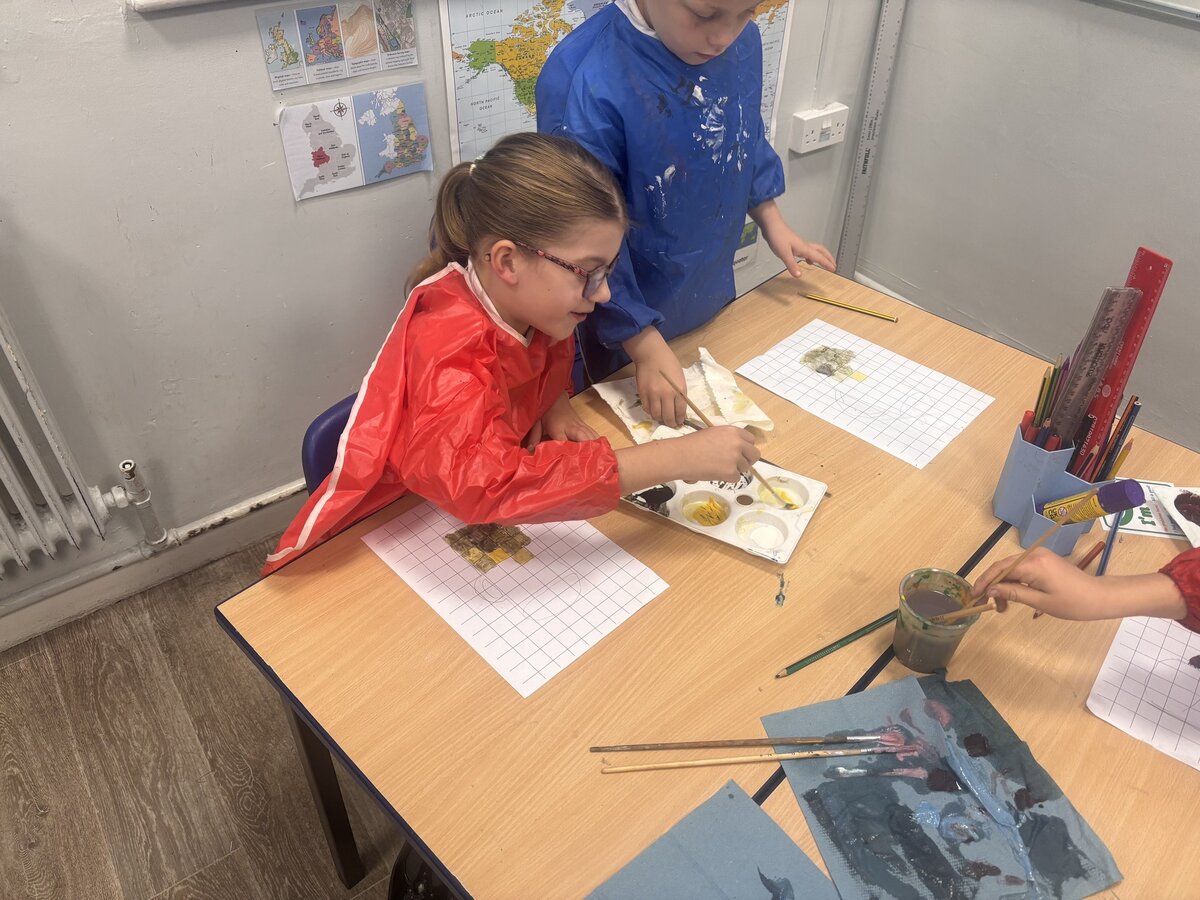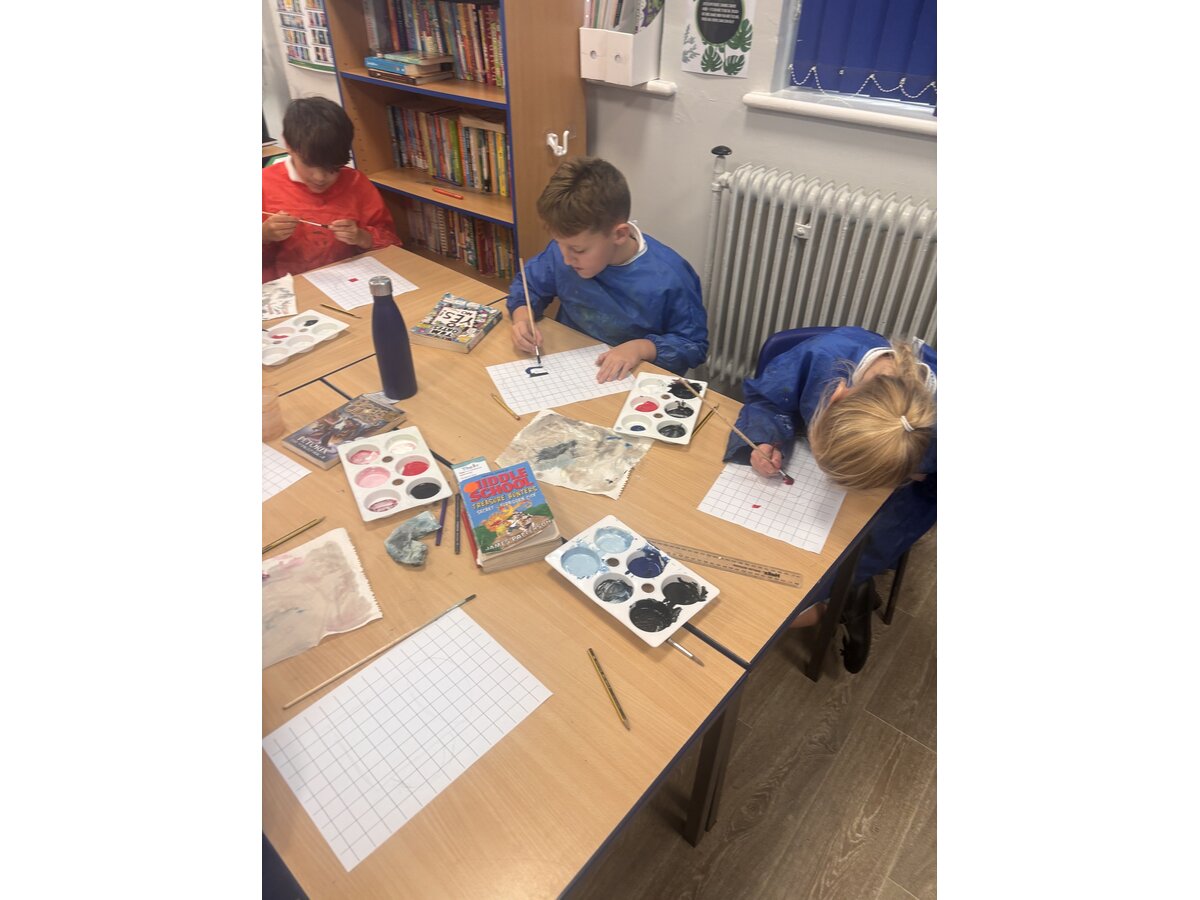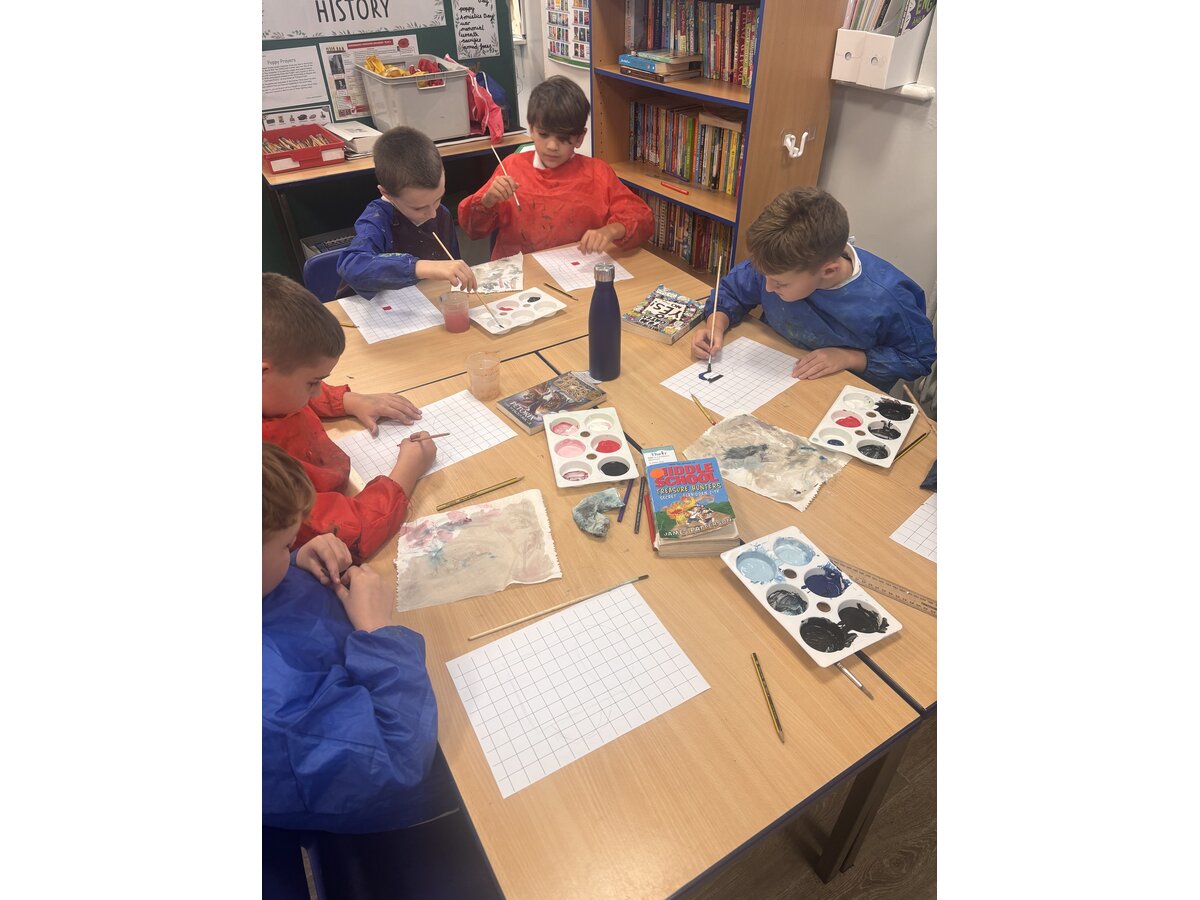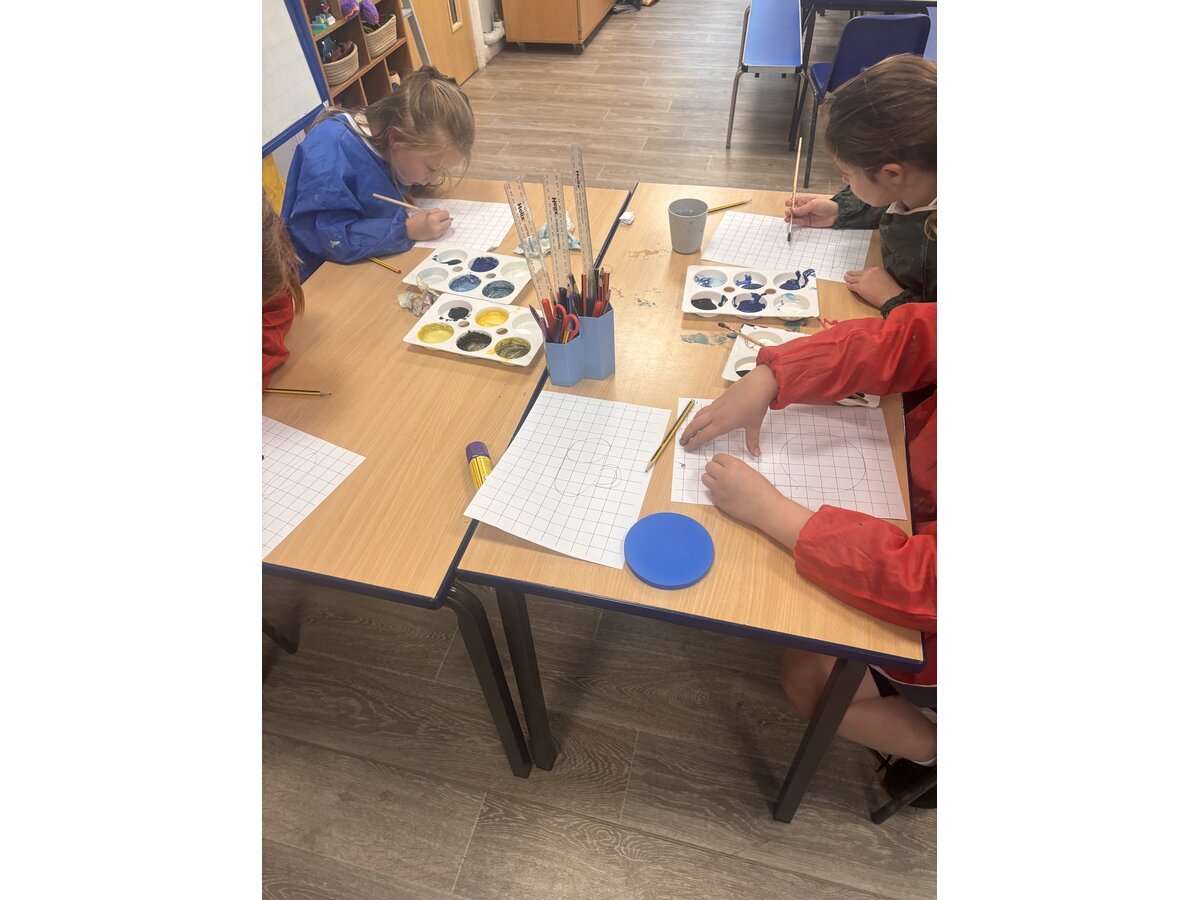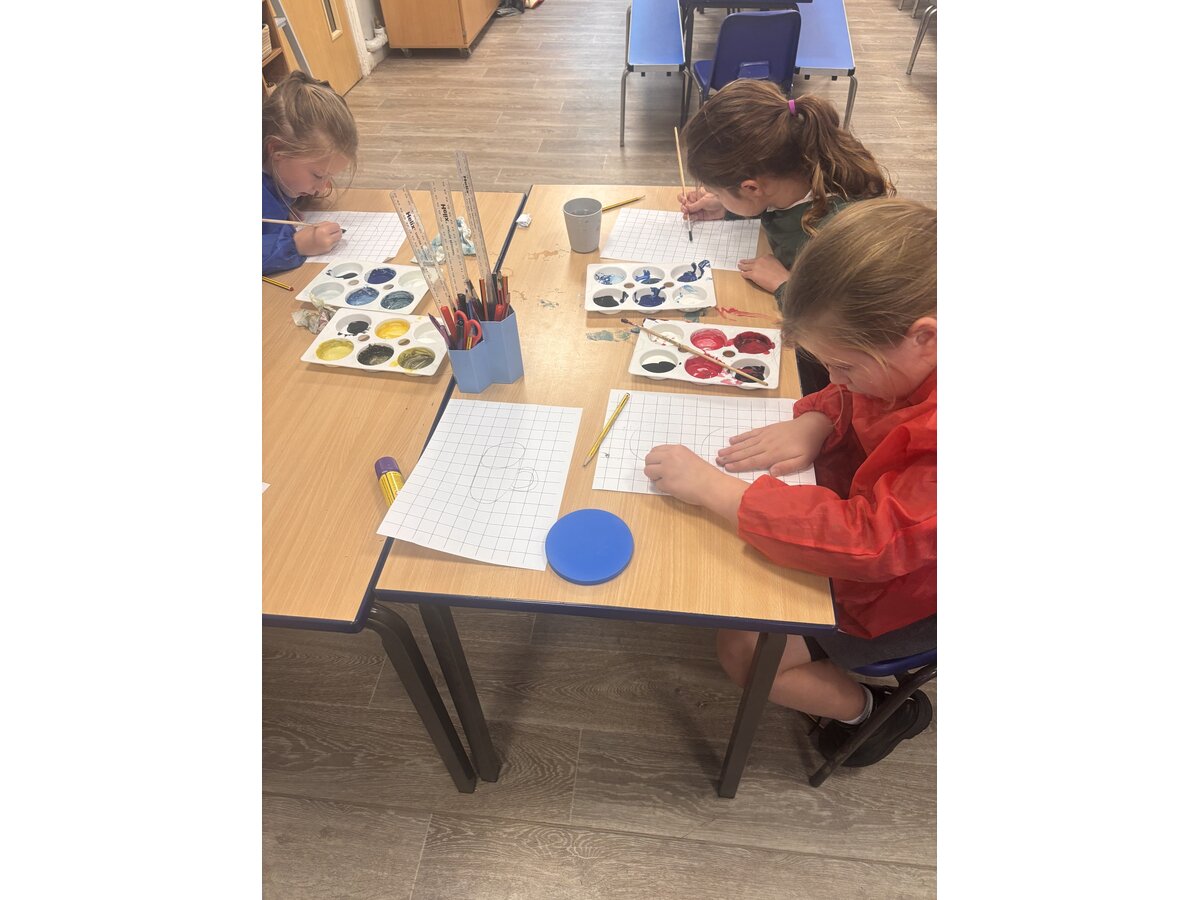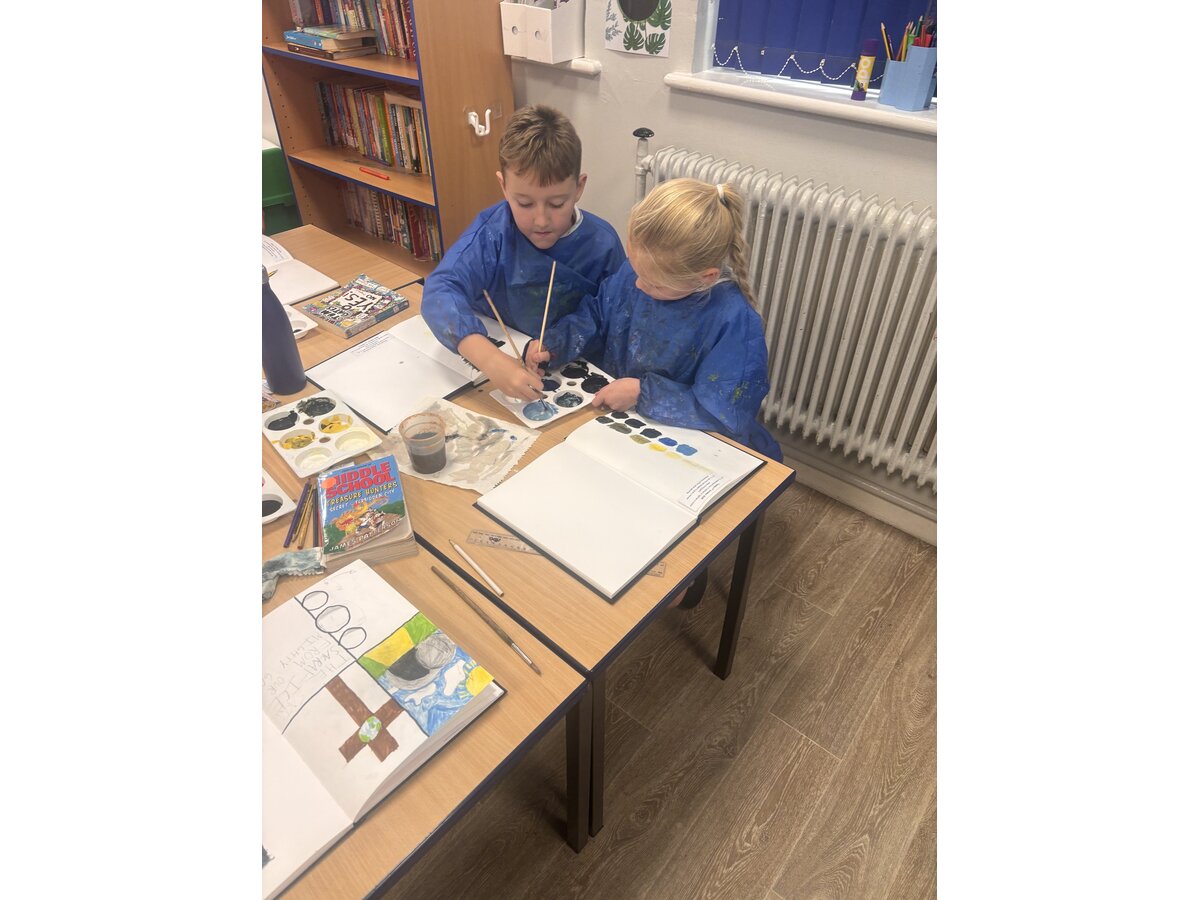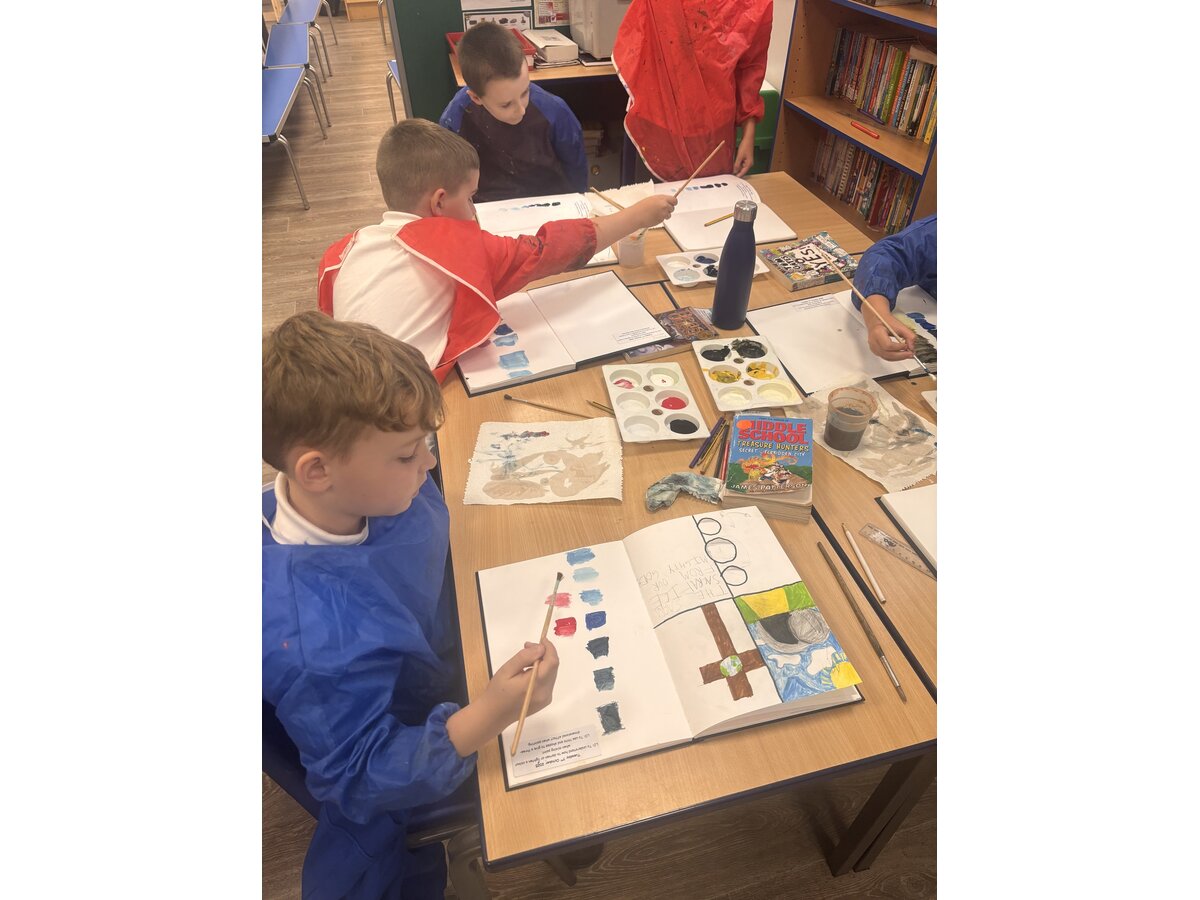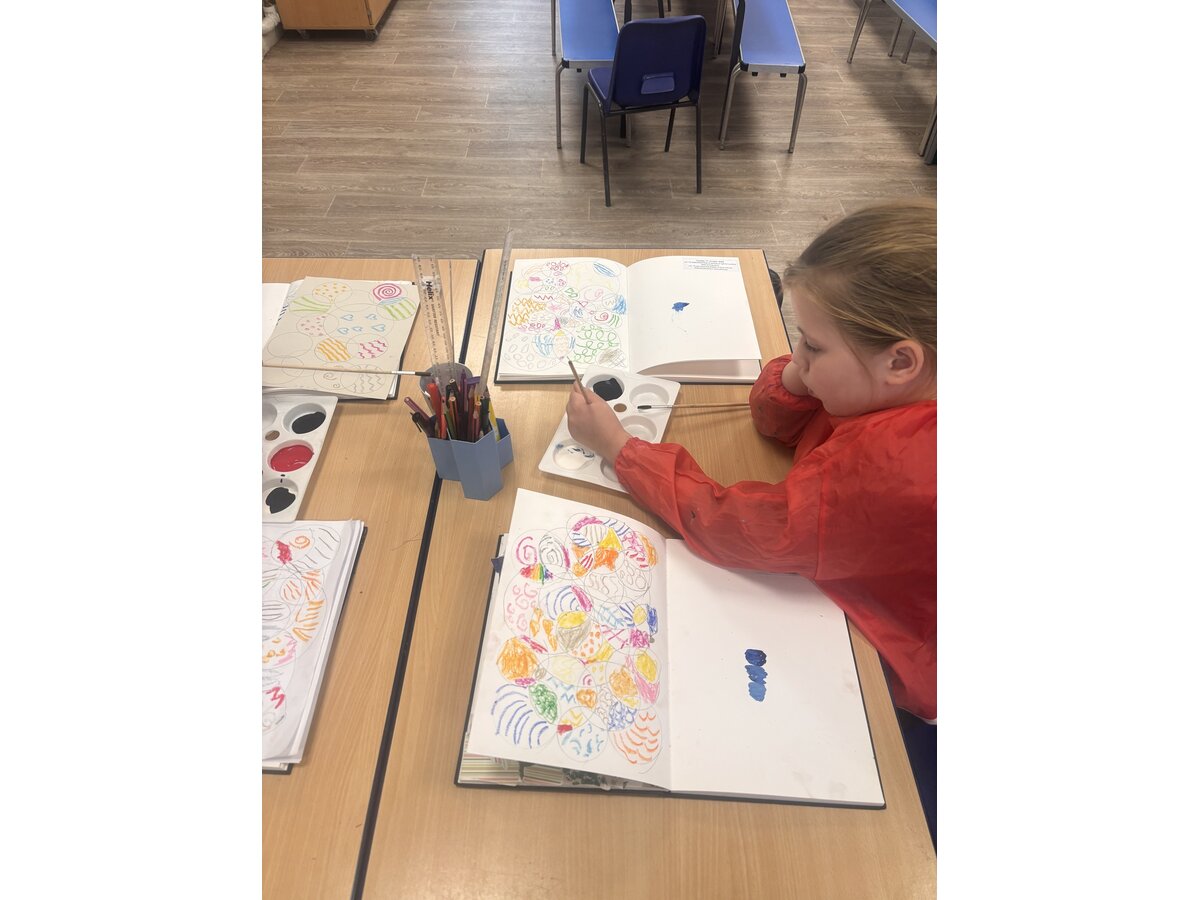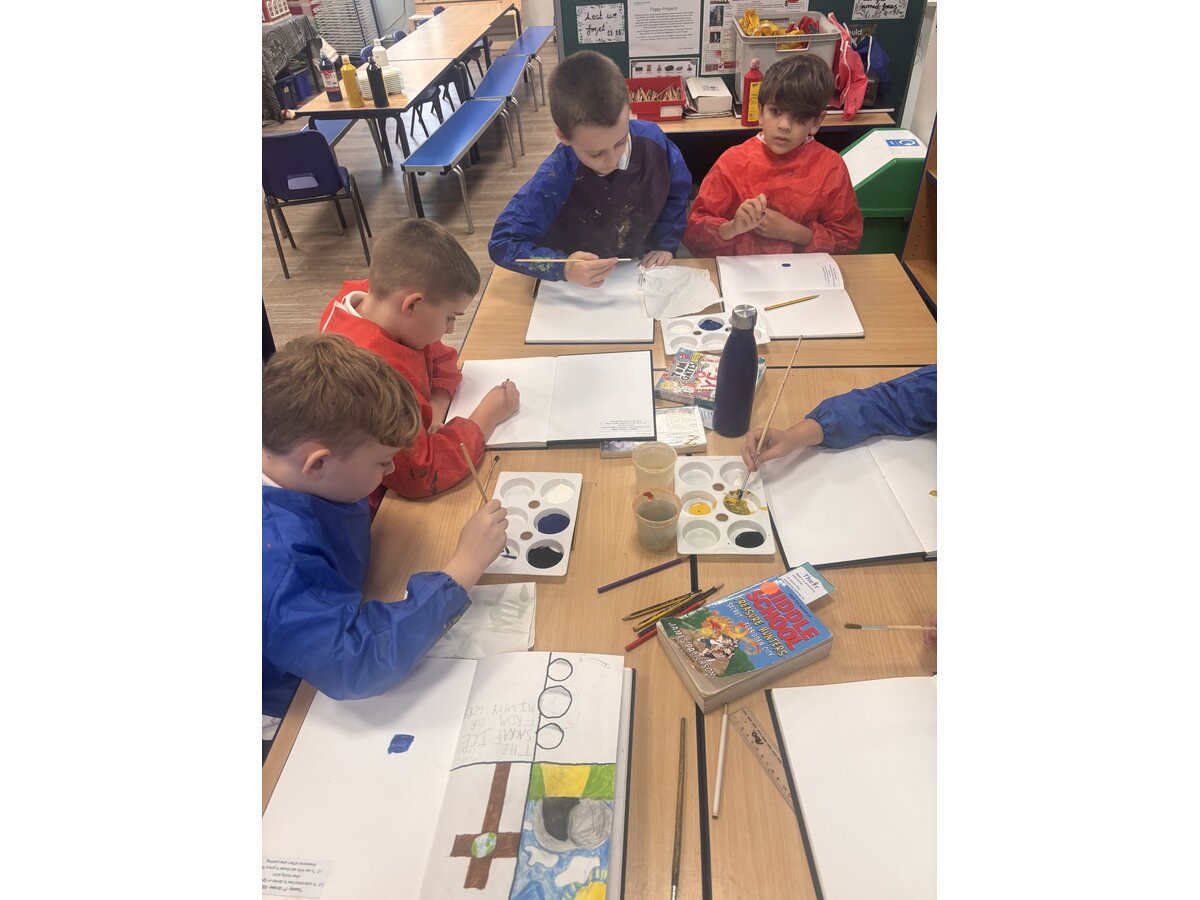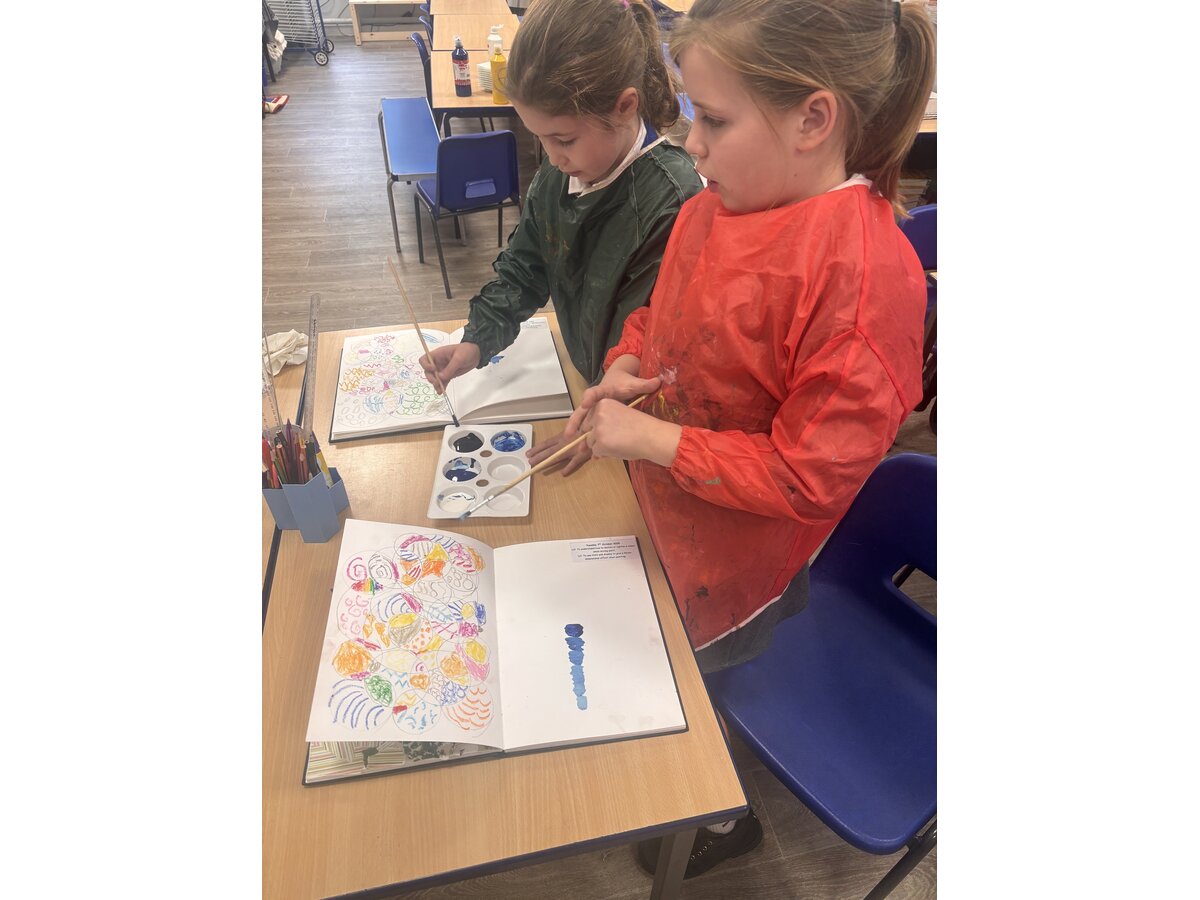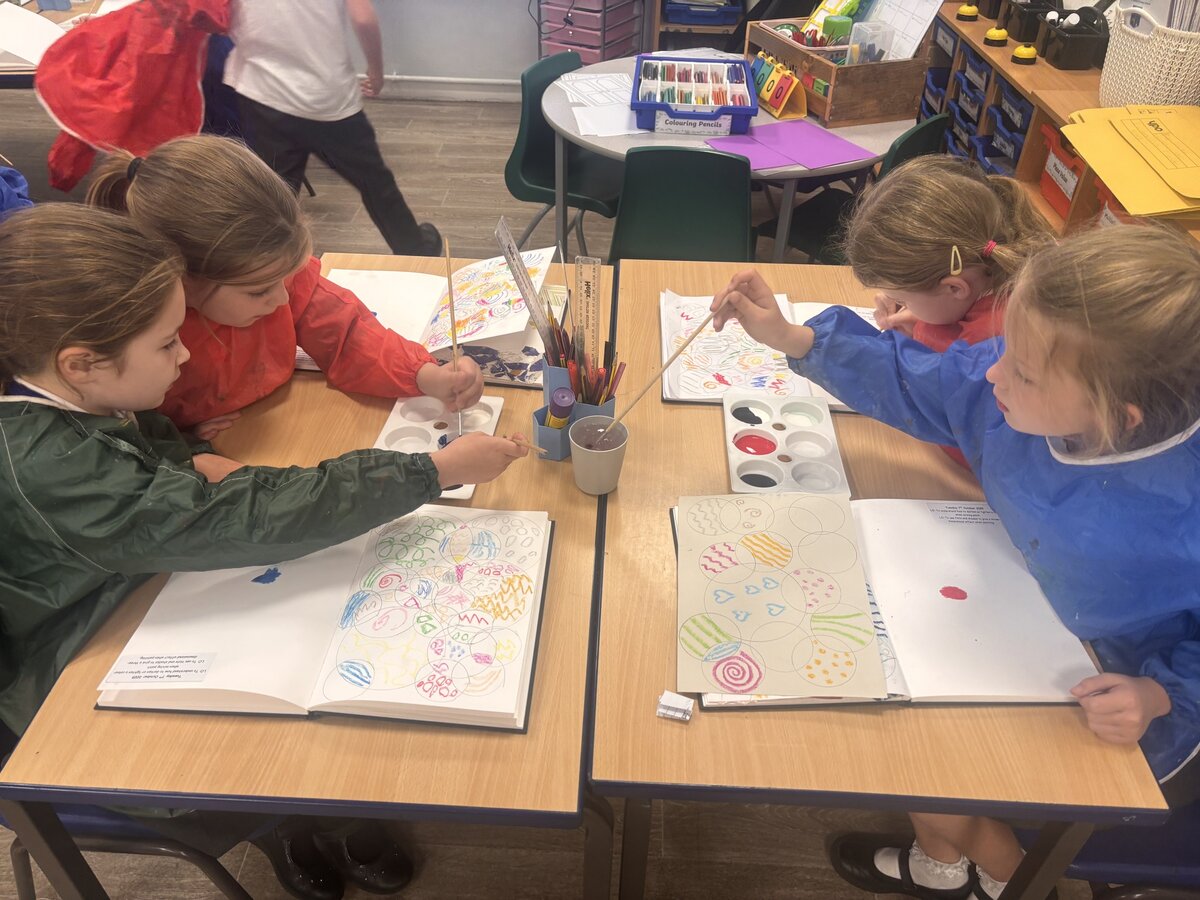7 October 2025
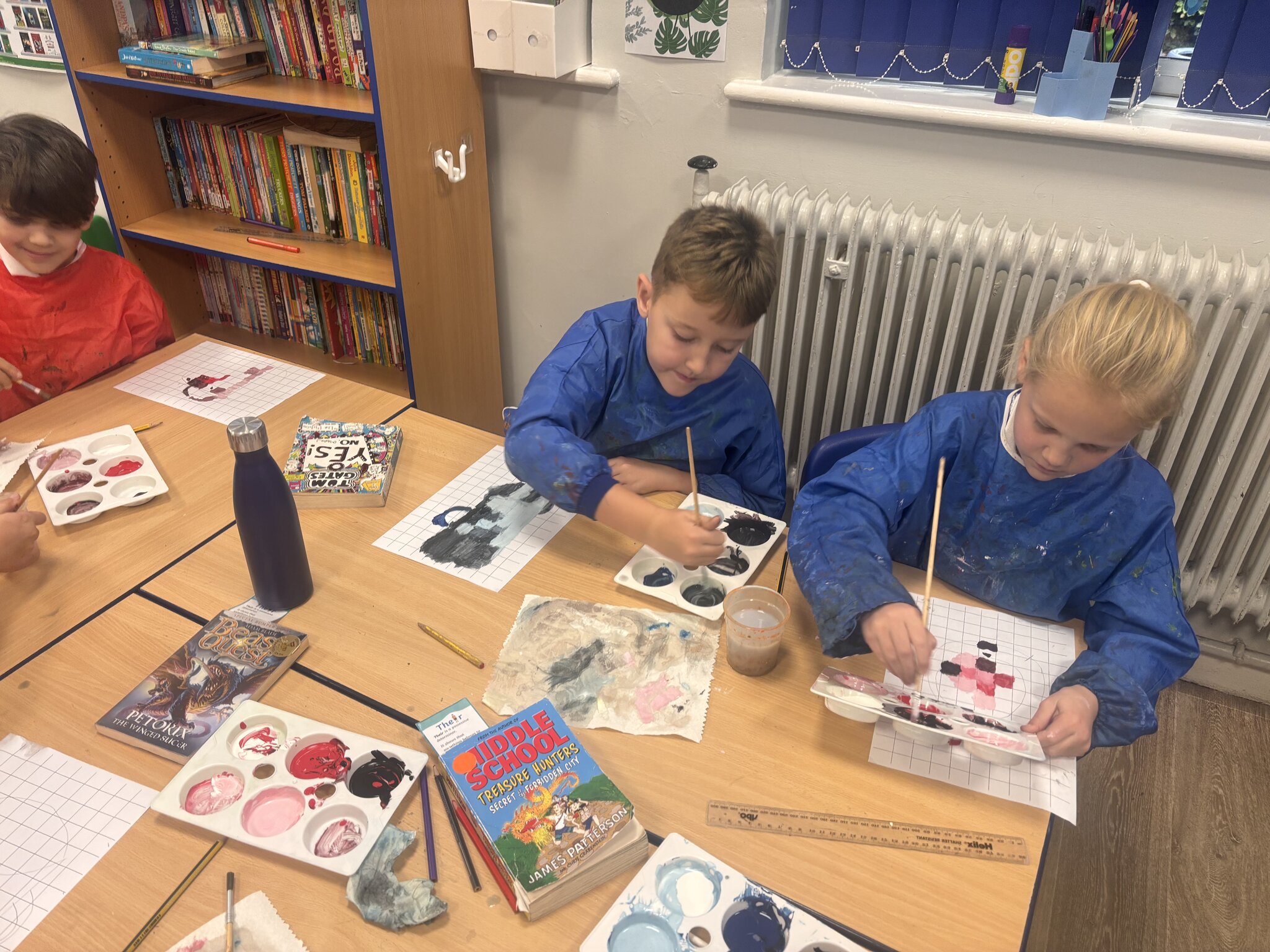
Willow Class has been diving into the amazing world of colour theory, and we've discovered a fantastic way to make our artwork jump right off the page: tints and shades! This skill is a fundamental building block for artists and is key to making flat drawings look three-dimensional (3D).
Mixing Our Colours
We started with the basics. Every student chose a single primary colour—a vibrant red, a bold blue, or a cheerful yellow—to be their base.
-
To create a tint, we slowly added white paint to our base colour. We learned that a little bit of white goes a long way, gradually lightening the original colour and making it look brighter and softer.
-
To create a shade, we did the opposite, carefully mixing in small amounts of black paint. This deepened the base colour, making it look richer and darker.
This practice session was essential. We ended up with a beautiful gradient, from the lightest tint to the darkest shade, giving us a full range of tones to work with.
The 3D Challenge
The next step was to put our new mixing skills to the ultimate test: creating a 3D image.
To keep things neat and help with the visual effect, we drew our design on squared paper. Most students chose simple shapes—cubes, pyramids, or overlapping blocks—that are perfect for showing dimension.
The secret to the 3D effect lies in how we apply our tints and shades. When something looks 3D, it has a light side and a dark side, just like in real life when a torch shines on an object.
-
We used our lightest tints on the sides of the shapes where the imaginary light source was hitting. This made those areas pop forward.
-
We used our base colour for the middle areas.
-
We used our darkest shades for the sides that would be hidden from the light. This made those areas recede and look like they were casting shadows.
The concentration in the room was intense, but the effort was absolutely worth it! Looking at the finished pieces, it’s incredible how successful the class was. The squares and shapes that started as flat, two-dimensional drawings now appear to be solid objects with depth and form.
This project taught Willow Class more than just how to mix paint; it showed them how artists can manipulate colour to create the illusion of reality. It's a wonderful example of how combining art with a little bit of science (the science of light and shadow!) can lead to stunning results.
Well done, Willow Class, for mastering the art of tints and shades!
Posted by Rachel Mills
Category: Class 2
